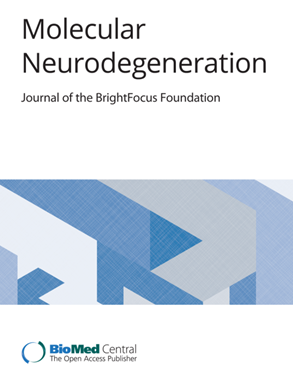制造轨迹:小胶质细胞和细胞外基质
IF 17.5
1区 医学
Q1 NEUROSCIENCES
引用次数: 0
摘要
小胶质细胞是中枢神经系统(CNS)的常驻免疫细胞,是神经稳态的关键调节因子,介导免疫监视、突触重塑、碎片清除和炎症信号。新出现的证据强调细胞外基质(ECM)在生理和病理背景下对小胶质细胞行为都很重要。中枢神经系统ECM是一种动态的、具有生物活性的支架,由三个主要隔室组成:间质基质、神经血管和神经上皮界面的基底膜和神经元周围网(PNNs)。每个隔室都表现出不同的分子结构,从基膜中的纤维胶原和糖蛋白到PNNs中的硫酸软骨素蛋白聚糖和富含透明质酸的结构。在这篇综述中,我们研究了小胶质细胞如何参与和重塑ECM,以动态响应衰老和疾病引起的体内平衡破坏。我们讨论了小胶质细胞- ecm“相互作用组”的概念,它可能代表了小胶质细胞感知、修饰和响应细胞外环境的分子界面。这种相互作用组使小胶质细胞能够在常规监测期间进行精细的ECM重塑,以及在病理条件下进行大规模改变,以帮助保持功能和运动性。在衰老和疾病中,小胶质细胞-ECM相互作用组的失调表现为机械转导异常、蛋白酶活性升高、ECM重塑和持续的促炎细胞因子释放。这些病理改变损害ECM的完整性,挑战小胶质细胞的活性,并导致进行性神经血管和突触功能障碍。破译支持小胶质细胞- ECM相互作用的分子机制对于理解神经退行性变中区域特异性易变性至关重要,并可能揭示保留ECM结构和对抗中枢神经系统疾病的新治疗靶点。本文章由计算机程序翻译,如有差异,请以英文原文为准。
Making tracks: microglia and the extracellular matrix
Microglia are resident immune cells of the central nervous system (CNS) and critical regulators of neural homeostasis, mediating immune surveillance, synaptic remodeling, debris clearance, and inflammatory signaling. Emerging evidence highlights the extracellular matrix (ECM) as important to microglial behavior in both physiological and pathological contexts. The CNS ECM is a dynamic and bioactive scaffold composed of three primary compartments: interstitial matrix, basement membranes at neurovascular and neuroepithelial interfaces, and perineuronal nets (PNNs). Each compartment exhibits distinct molecular architectures, ranging from fibrillar collagens and glycoproteins in basement membranes to chondroitin sulfate proteoglycans and hyaluronan-rich structures in PNNs. In this review we examine how microglia engage with and reshape the ECM to dynamically respond to disruptions in homeostasis with aging and disease. We discuss the concept of the microglial–ECM “interactome”, which may represent a molecular interface through which microglia sense, modify, and respond to their extracellular environment. This interactome enables microglia to enact fine-scale ECM remodeling during routine surveillance, as well as large-scale alterations under pathological conditions to help preserve function and motility. In aging and disease, dysregulation of the microglial-ECM interactome is characterized by aberrant mechanotransduction, elevated proteinase activity, remodeling of the ECM, and sustained pro-inflammatory cytokine release. These pathological changes compromise ECM integrity, challenge microglial activity, and contribute to progressive neurovascular and synaptic dysfunction. Deciphering the molecular mechanisms underpinning microglial–ECM interactions is essential for understanding region-specific vulnerability in neurodegeneration and may reveal new therapeutic targets for preserving ECM structure and countering CNS disorders.
求助全文
通过发布文献求助,成功后即可免费获取论文全文。
去求助
来源期刊

Molecular Neurodegeneration
医学-神经科学
CiteScore
23.00
自引率
4.60%
发文量
78
审稿时长
6-12 weeks
期刊介绍:
Molecular Neurodegeneration, an open-access, peer-reviewed journal, comprehensively covers neurodegeneration research at the molecular and cellular levels.
Neurodegenerative diseases, such as Alzheimer's, Parkinson's, Huntington's, and prion diseases, fall under its purview. These disorders, often linked to advanced aging and characterized by varying degrees of dementia, pose a significant public health concern with the growing aging population. Recent strides in understanding the molecular and cellular mechanisms of these neurodegenerative disorders offer valuable insights into their pathogenesis.
 求助内容:
求助内容: 应助结果提醒方式:
应助结果提醒方式:


